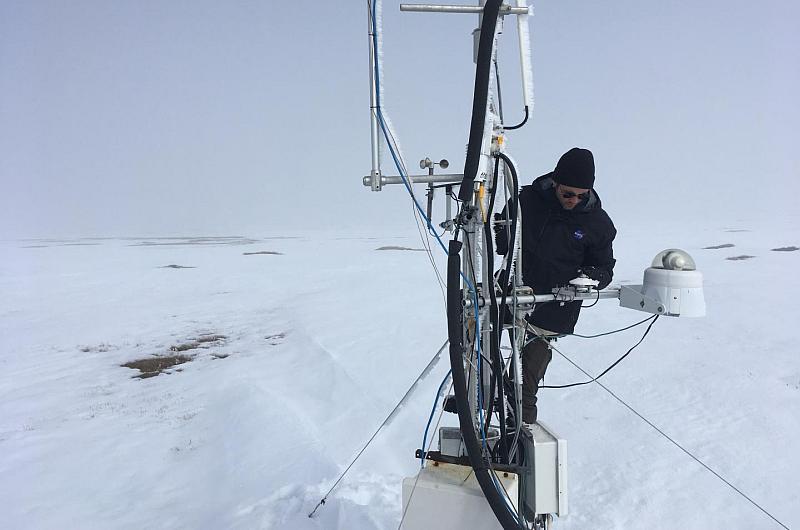
INTAROS partners at the University of Sheffield have just published research on carbon emissions in the Arctic, together with San Diego State University. This new research finds that water from spring snow-melt infiltrates the soil and triggers fresh carbon dioxide production at higher rates than previously assumed. This is in addition to trapped carbon escaping from the soil, which means an acceleration in warming that is not quite accounted for in current measurement techniques.
Studies have shown the Arctic is warming roughly twice as fast as the rest of the world, and its soil holds twice the amount of carbon dioxide as the atmosphere. Cold thaw accounts for nearly half of carbon emissions in the Arctic, which can offset the summer uptake or absorption of carbon dioxide by vegetation.
This new research fills a gap in data that has long existed because harsh winters and springs made the Arctic difficult to access to conduct studies. Nevertheless, the cold season is an essential component of the annual carbon balance, although it was assumed to have a negligible impact on carbon production. By analyzing soil core samples, the team found that it wasn't just trapped greenhouse gases that were escaping but also likely increasing fresh production of carbon during the spring thaw.
"Earlier we didn't have this data, but now that we do, we are seeing that these ecosystems are rapidly warming," said Kyle Arndt, lead author of this new paper, "Many models already predict the Arctic will turn into a CO2 source, but they may be underestimating the size of the source if this spring process is not taken into account."
Simpler models of data analysis may miss the rapid warming that happens due to snow-melt, when there's a rapid introduction of oxygen leading to the warming. The next challenge will be to see how these patterns change over time.
"We will look for long-term trends in carbon dioxide release and how the heat fluxes have been changing over the last decade," added Donatella Zona, Associate Professor of Biology and co-author of the new publication.
This research was funded by grants from the National Science Foundation (NSF), NASA CARVE and ABoVE programs, National Oceanic and Atmospheric Administration CREST, the Horizon 2020 INTAROS, and the NERC UAMS projects.
Citation: , , , , . Snow melt stimulates ecosystem respiration in Arctic ecosystems. Glob Change Biol. 2020; 00: 1– 10. https://doi.org/10.1111/gcb.15193
03 July 2020